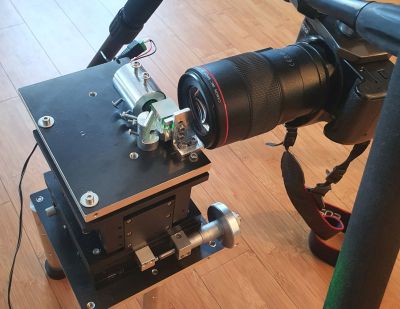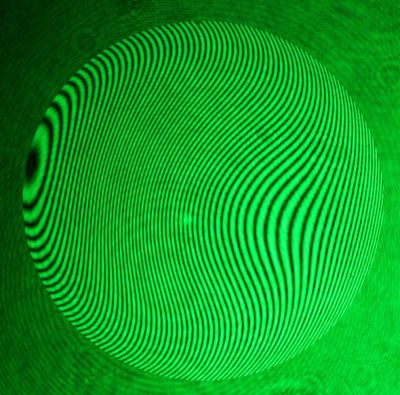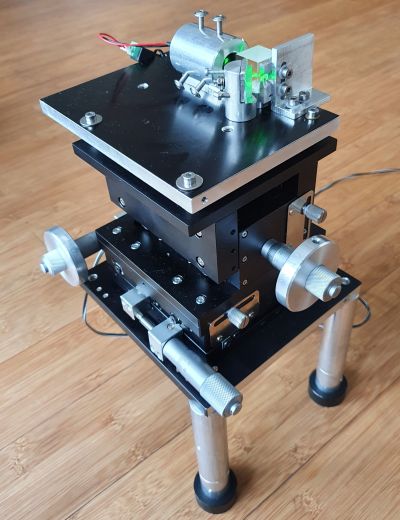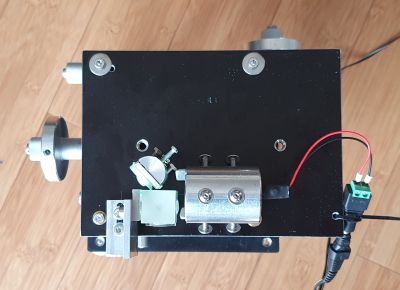My Bath- interferometer (common path interferometer) in 90° geometry is made with parts, that were selected from the ingenious Alois Ordner, to provide best perfomance:
- Well collimated 5 mW Laser (Roithner DPSS Laser module CW532-005F, green with a wavelength of 532 nm) with a focusable 4 mm lens, powered with a stabilised 3V power supply. The non focusable version CW532-005 should work equally well.
- Multicoated 50/50% beam splitter cube with 20 mm side length, surface flatness Lambda/10.
- Multicoated biconvex lens with 5 mm diameter, 5 mm focal length, accuracy Lambda/4. The lens holder can be adjusted lateral and in height.
- 3 D adjustable surface coated optical flat mirror.
- Bath beam separation approx. 7 mm.
The testing device is mounted on a 4.3 kg heavy duty XYZ- stage with a platform size of 125x125 mm. The stage stays on 3 feet with 100, 50 and 30 mm segments for rough height adjustment. Thanks to the high total weight of 6.5 kg it stays rock solid and can be fine adjusted in all 3 axes tremor free and without any backlash.
Front view with the milled down lens holder edge to minimize the beam seperation



